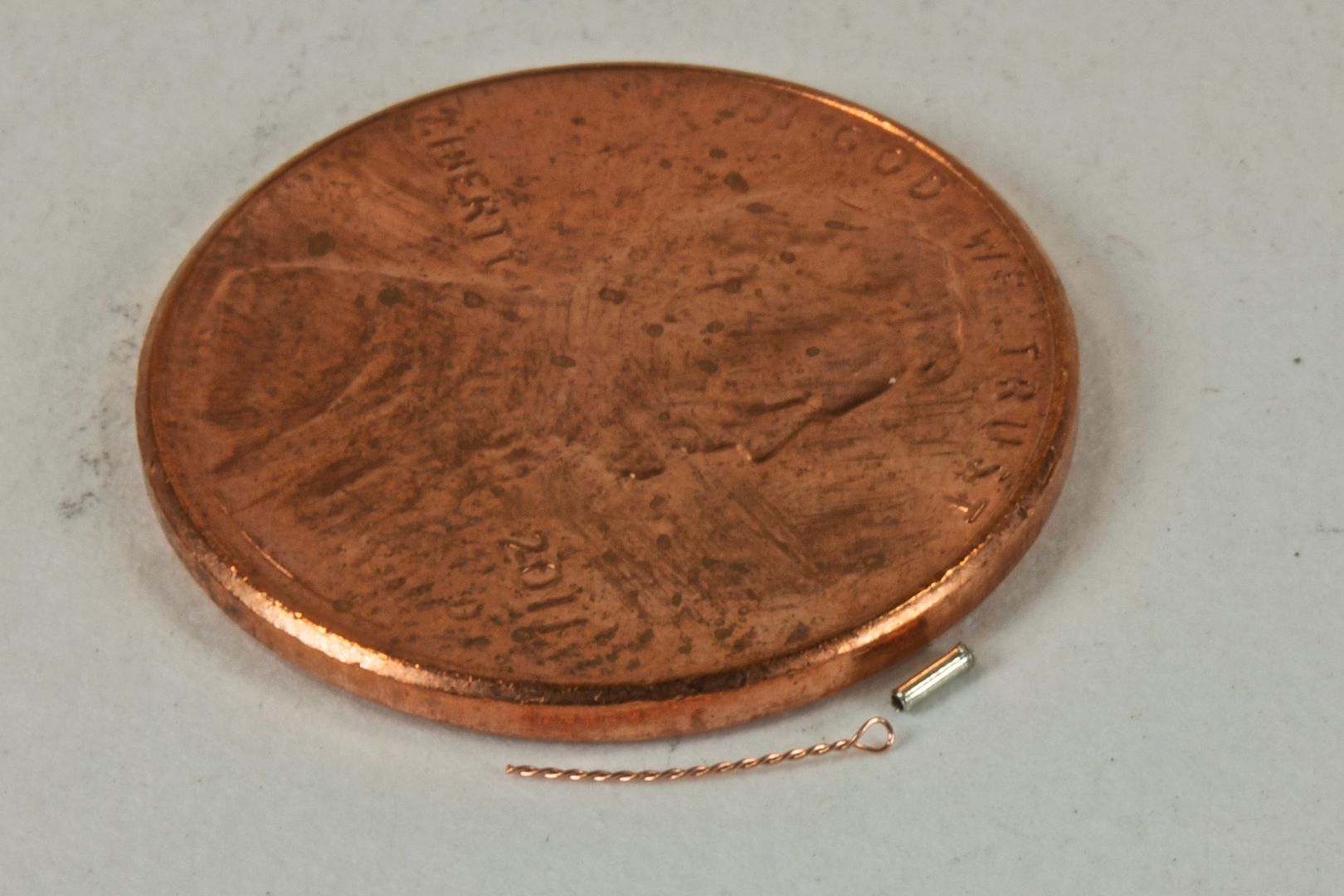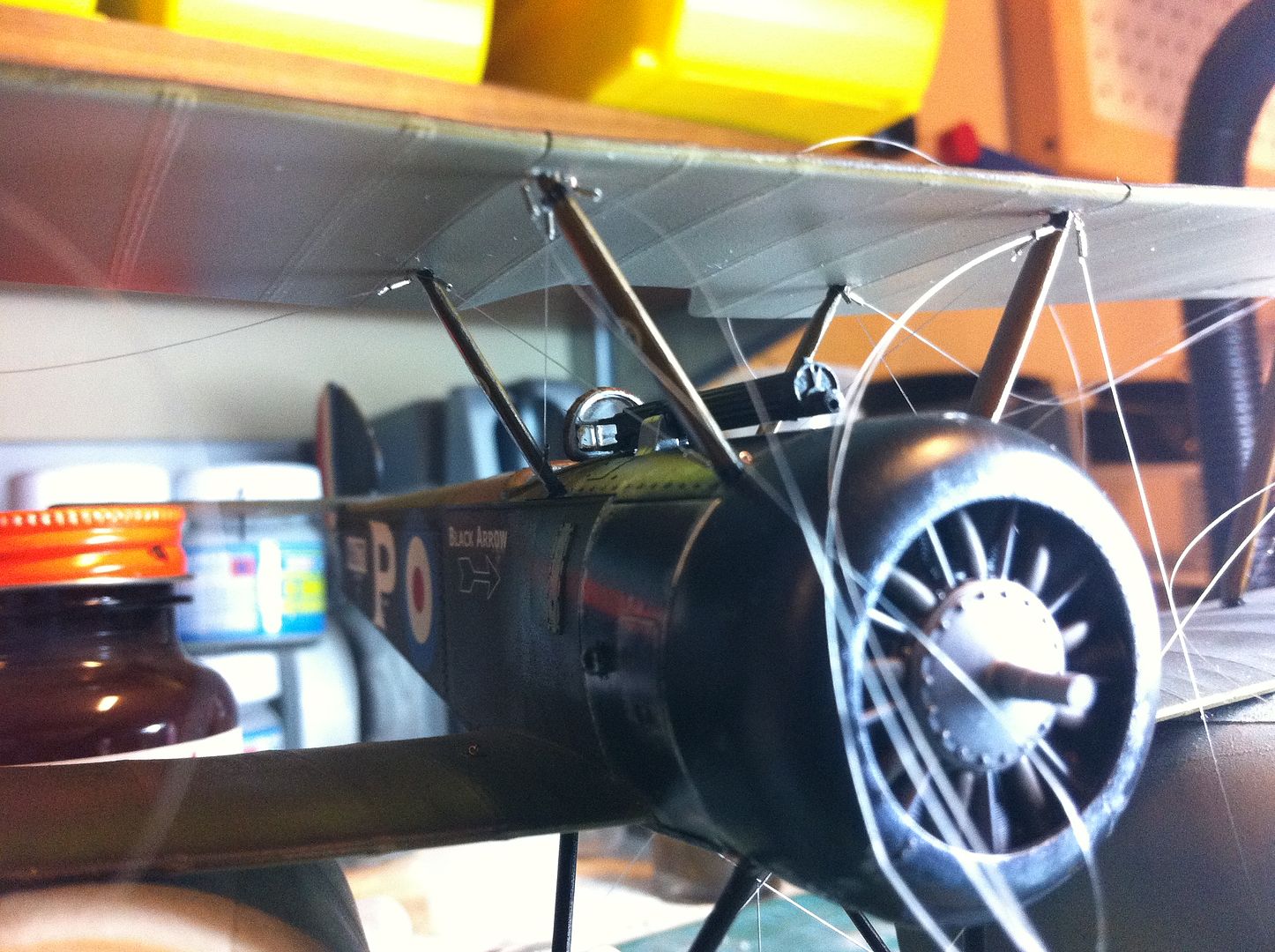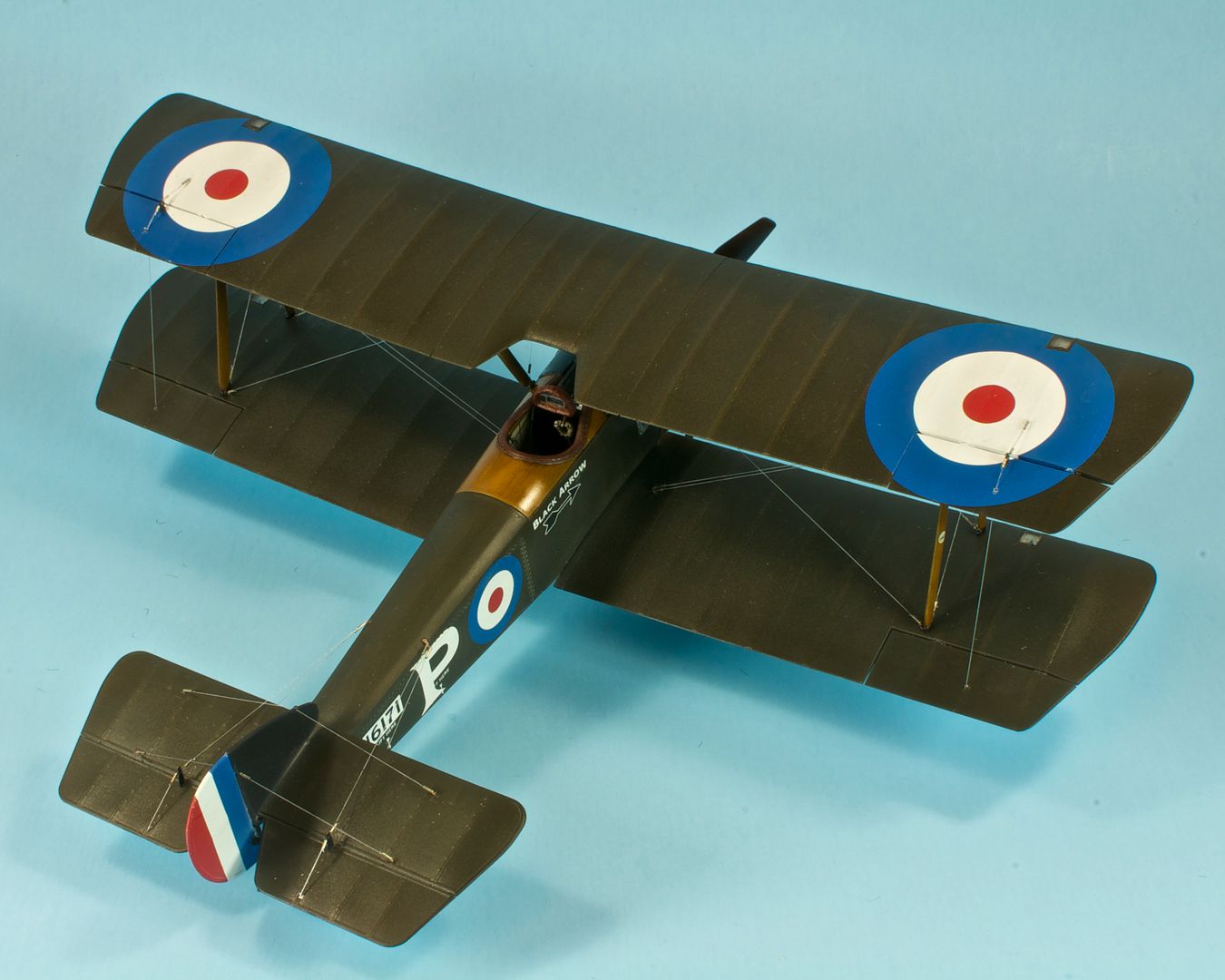There's no "quick and easy" way per se. Biplane rigging is tedious work at best. But there are a few more or less foolproof ways.
This article's a great primer: http://www.austinsms.org/article_seaman.php
Personally, I use what I've started calling the "bolo" method:
Start with many eyebolts. I use a fine brass wire called Ultra Wire. Cut a length, double up the ends and clasp in a pair of pliers. Other end loops over a hook of thicker wire in a pin vise. Twist pin vise to twist the Ultra Wire save for the end looped over the thicker wire. Trim off excess when done. Instant eyebolt. Drill holes in the wing / fuselage, and attach the eyebolts with medium or thick CA.
Make turnbuckles. Very fine (we're talking like .5mm diameter) tubing. Cut into short lengths by rolling an xacto over the tubing sort of like a rolling pin.
Rig. I prefer a monofilament line called Uni-Mono (it has a bit more elasticity than usual mono line). Thread through a tubing "turnbuckle", then through the eyebolt, then back through the tubing. Slide tubing down close to the eyebolt, then get a few drops of thin CA into the far side of the tubing. Once it cures, carefully trim the excess line.
Sounds intimidating, but once you do the first one or two, it's more an exercise in patience than anything else. The actual process is more or less foolproof.
To give a sense of the sizes involved:

Rigging underway:

Done:

On the Bench: 1/32 Trumpeter P-47 | 1/32 Hasegawa Bf 109G | 1/144 Eduard MiG-21MF x2
On Deck: 1/350 HMS Dreadnought
Blog/Completed Builds: doogsmodels.com